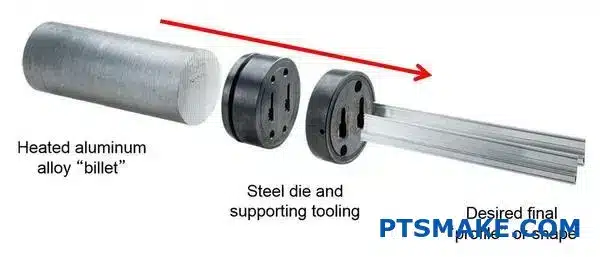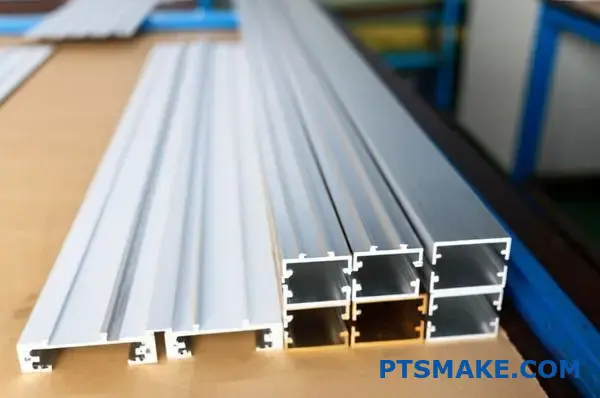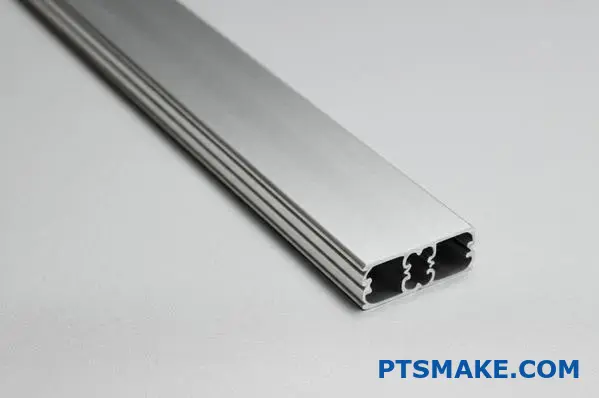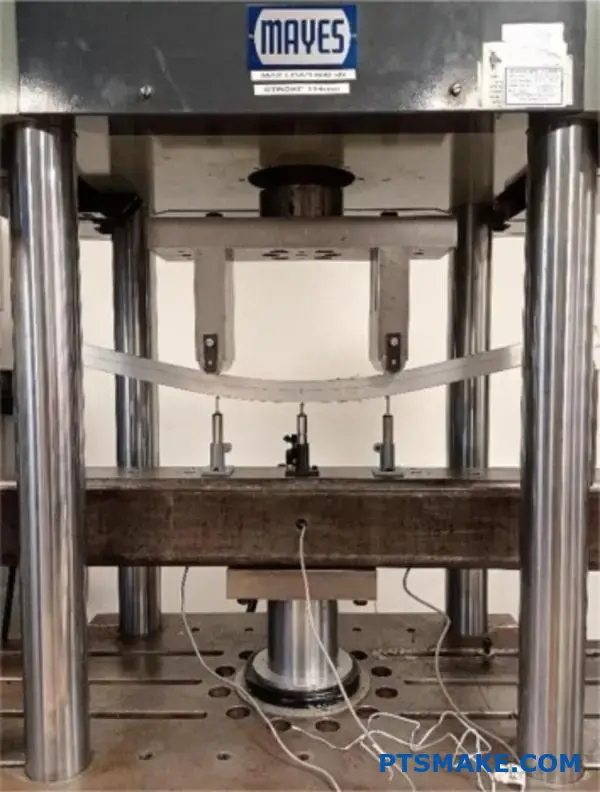Are you struggling to understand what makes aerospace CNC machining different from regular machining? In this high-stakes industry, even the smallest error can lead to catastrophic failures, putting lives at risk and causing millions in damages.
Aerospace CNC machining is a specialized manufacturing process that uses computer-controlled machines to create precise metal and composite parts for aircraft, spacecraft, and satellites. It requires exceptional precision, advanced materials, and strict quality control to meet aerospace industry standards.
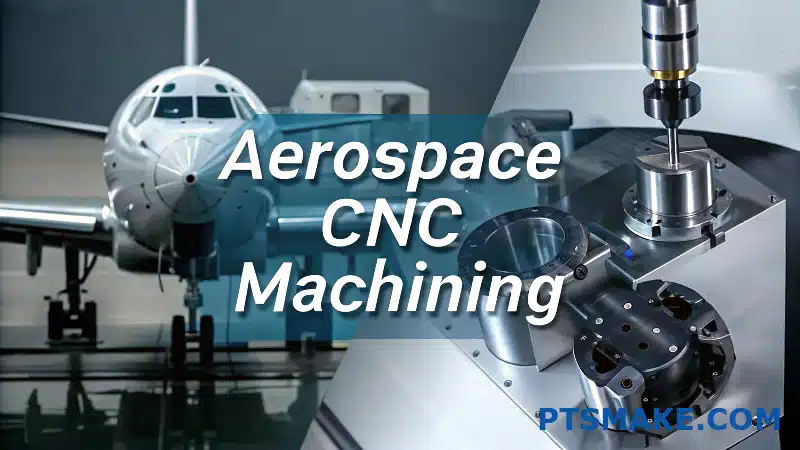
At PTSMAKE, I’ve worked with numerous aerospace clients who need parts with incredibly tight tolerances. The aerospace industry demands perfection – there’s simply no room for error when components will be subjected to extreme conditions. If you’re looking to understand how aerospace CNC machining differs from standard machining or need a reliable partner for your aerospace projects, keep reading to discover what makes this specialized process unique.
Why Is Precision Important For Aerospace CNC Machining?
Have you ever wondered what separates a successful aerospace project from a catastrophic failure? In the aerospace industry, even the slightest deviation in a component’s dimensions can lead to performance issues, safety hazards, or complete system failures. The margin for error? Often measured in microns.
Precision in aerospace CNC machining is crucial because it ensures components meet strict safety standards, perform reliably under extreme conditions, and integrate seamlessly with other parts. Without precision machining, aerospace vehicles would face compromised structural integrity, inefficient operations, and potentially catastrophic failures.
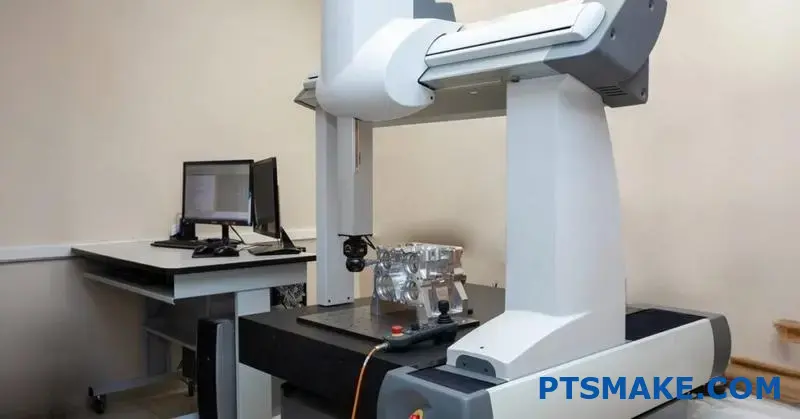
The Critical Role of Precision in Aerospace Applications
In aerospace manufacturing, precision isn’t just a quality metric—it’s a fundamental requirement. When I discuss precision with aerospace clients at PTSMAKE, I emphasize that we’re talking about tolerances that often measure in thousandths of an inch (or fractions of a millimeter). These seemingly tiny measurements make all the difference between a component that performs flawlessly for years and one that fails during critical operations.
Safety Implications of Precision Machining
Safety is paramount in aerospace. Commercial aircraft carry hundreds of passengers, military aircraft perform critical defense functions, and space vehicles transport astronauts beyond our atmosphere. Each of these applications demands components that perform exactly as designed, every time.
The tribological characteristics1 of aerospace components directly impact their performance and longevity. When parts experience extreme temperature variations, vibrations, and mechanical stress, even minor imprecisions can amplify into major failures. From my experience working with aerospace clients, I’ve seen how precision-machined parts demonstrate superior wear resistance and reliability over their operational lifetime.
Weight Optimization Through Precision
In aerospace, every gram matters. Precision machining enables manufacturers to create components that are:
- Lighter without sacrificing structural integrity
- Optimized for strength-to-weight ratio
- Dimensionally perfect for system integration
- Balanced for optimal performance
A typical commercial aircraft contains millions of parts. If each component is even slightly heavier than necessary due to imprecise machining, the cumulative weight penalty becomes significant. This translates directly into increased fuel consumption and reduced payload capacity—both critical economic factors for aerospace operators.
Fuel Efficiency and Environmental Impact
Precision machining contributes significantly to aerospace sustainability efforts. When engine components are machined with extreme precision, they:
- Create more efficient combustion processes
- Reduce friction between moving parts
- Optimize airflow dynamics
- Minimize energy losses throughout the system
These improvements might seem incremental when viewed individually, but collectively they produce substantial efficiency gains. In today’s climate-conscious environment, precision machining is becoming as much an environmental imperative as an engineering one.
Technical Challenges in Aerospace Precision Machining
Achieving the necessary precision for aerospace applications presents several technical challenges:
Material Considerations
Aerospace components often utilize specialized materials that are difficult to machine, including:
| Material Type | Common Applications | Machining Challenges |
|---|---|---|
| Titanium Alloys | Structural components, engine parts | Heat generation, tool wear, work hardening |
| Inconel | Engine components, high-heat applications | Extremely tough, rapid tool wear, difficult chip evacuation |
| Carbon Fiber Composites | Lightweight structures, panels | Delamination risk, specialized tooling requirements |
| Aluminum-Lithium Alloys | Structural components | Chip control, surface finish maintenance |
Each material requires specific machining parameters, cutting tools, and expertise. At PTSMAKE, we’ve developed specialized processes for each of these challenging materials to achieve the precision our aerospace clients require.
Thermal Management
Temperature fluctuations are the enemy of precision. During machining operations, heat generated from cutting processes can cause material expansion, leading to dimensional inaccuracies. Effective thermal management strategies include:
- Advanced coolant delivery systems
- Temperature-controlled machining environments
- Strategic machining sequences to allow heat dissipation
- Thermal compensation in machine programming
Complex Geometries
Aerospace components rarely feature simple shapes. From turbine blades with complex airfoil profiles to structural components with intricate weight-reduction features, the geometric complexity of aerospace parts demands advanced machining capabilities.
Five-axis machining centers, which we employ at PTSMAKE, allow for the production of these complex geometries in single setups, minimizing the error potential from multiple fixturing operations. This technology enables us to achieve the precision required for components with compound curves, undercuts, and variable wall thicknesses.
Quality Assurance in Precision Aerospace Machining
Precision isn’t just about manufacturing capabilities—it’s equally about verification and quality assurance. The aerospace industry has developed rigorous standards that govern the production and inspection of components:
Metrology and Inspection Techniques
Modern aerospace manufacturing relies on advanced metrology equipment including:
- Coordinate Measuring Machines (CMMs) accurate to microns
- 3D optical scanning systems
- Laser tracking devices
- Surface roughness analyzers
- Computed tomography for internal feature inspection
These technologies allow for 100% verification of critical dimensions, ensuring that precision requirements are consistently met. The data collected from these inspections also feeds back into the manufacturing process, enabling continuous improvement.
How Does Material Selection Impact Aerospace CNC Machining Outcomes?
Have you ever wondered why some aerospace components fail unexpectedly while others perform flawlessly for decades? The difference often lies not in the machining process itself, but in a critical decision made before cutting even begins: material selection. This choice can make or break the entire project.
Material selection fundamentally determines aerospace CNC machining outcomes by influencing component performance, machining complexity, cost, and longevity. The right material balances weight requirements, thermal properties, corrosion resistance, and mechanical strength while remaining compatible with precise machining processes.
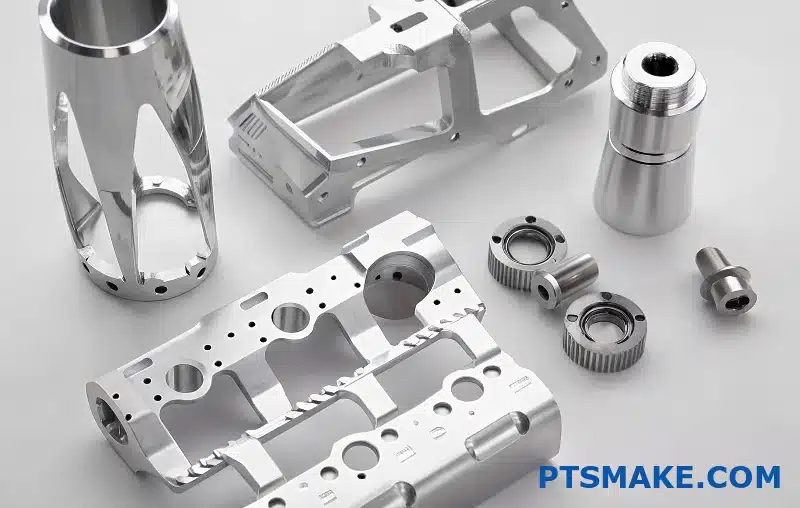
Critical Material Properties for Aerospace Applications
When selecting materials for aerospace components, several key properties must be carefully evaluated. Each property directly impacts both the manufacturing process and the final performance of the part.
Strength-to-Weight Ratio
In aerospace, every gram matters. This ratio measures how much load a material can bear relative to its mass—a critical factor when fuel efficiency and payload capacity are paramount concerns.
Materials like titanium alloys and advanced aluminum alloys offer exceptional strength while maintaining relatively low weight. For example, Ti-6Al-4V (Grade 5 titanium) provides roughly twice the strength of 6061 aluminum while being only 60% heavier, resulting in a superior strength-to-weight profile.
In my experience working with satellite manufacturers, switching from standard steel to a titanium alloy for structural brackets reduced component weight by 47% while maintaining the required strength parameters.
Temperature Resistance
Aerospace components often operate in extreme temperature environments. Materials must maintain their structural integrity and mechanical properties across wide temperature ranges.
| Material | Maximum Service Temperature | Minimum Service Temperature | Common Applications |
|---|---|---|---|
| Inconel 718 | 1300°F (704°C) | -423°F (-253°C) | Engine components, exhaust systems |
| Ti-6Al-4V | 800°F (427°C) | -350°F (-212°C) | Structural components, landing gear |
| 7075 Aluminum | 350°F (177°C) | -320°F (-196°C) | Airframe structures, wing components |
| PEEK | 480°F (250°C) | -184°F (-120°C) | Interior components, electrical housings |
Corrosion Resistance
Aerospace components must withstand harsh environmental conditions, including exposure to moisture, salt, hydraulic fluids, and various chemicals. Materials with poor corrosion resistance can fail prematurely, putting lives at risk.
Stainless steels (particularly 15-5PH and 17-4PH), nickel alloys, and titanium alloys provide excellent corrosion resistance. At PTSMAKE, we’ve observed that proper material selection can extend component lifespan by 300% or more in corrosive environments.
Machinability Factors
The ease with which a material can be machined directly affects production time, tool wear, and dimensional accuracy. Materials with poor machinability2 often require specialized tooling, slower cutting speeds, and more frequent tool changes.
Aluminum alloys typically offer excellent machinability, allowing for faster production cycles and tighter tolerances. Titanium and nickel-based superalloys, while offering superior physical properties, present significant machining challenges due to their hardness, low thermal conductivity, and tendency to work-harden.
Common Aerospace Materials and Their Machining Considerations
Aluminum Alloys (2024, 6061, 7075)
Aluminum remains the workhorse of aerospace manufacturing, comprising up to 80% of some aircraft structures. Its excellent machinability, light weight, and good strength make it ideal for many applications.
Machining considerations:
- High cutting speeds possible (up to 1000 m/min)
- Requires proper cooling to prevent chip welding
- Can achieve excellent surface finishes (Ra < 0.8μm)
- Cost-effective for complex geometries
One challenge when machining thin-walled aluminum components is controlling deflection during the cutting process. At PTSMAKE, we’ve developed specialized fixturing solutions that maintain dimensional stability even for wall thicknesses below 0.5mm.
Titanium Alloys (Ti-6Al-4V, Ti-6Al-2Sn-4Zr-2Mo)
Titanium provides an exceptional combination of strength, light weight, and corrosion resistance. However, it presents significant machining challenges.
Machining considerations:
- Low thermal conductivity causes heat concentration at the cutting edge
- Requires rigid machine setups to prevent chatter
- Cutting speeds limited to 30-60 m/min
- Specialized coolant strategies needed to extend tool life
The aerospace industry’s demand for titanium continues to grow. From my observations, the machining expertise required for titanium represents a significant competitive advantage for manufacturing partners who have mastered these techniques.
Nickel-Based Superalloys (Inconel 718, Waspaloy)
These materials excel in extreme environments, maintaining their properties at temperatures that would weaken or deform other metals. This makes them ideal for engine components and other high-temperature applications.
Machining considerations:
- Extremely high tool wear rates
- Very low cutting speeds (10-30 m/min)
- Work hardening during machining can create difficult-to-machine surfaces
- Specialized coating on cutting tools required
Working with aerospace engine manufacturers has taught me that successful machining of superalloys often comes down to the small details: precise feed rates, optimal tool engagement, and maintaining consistent cutting parameters throughout the process.
Material Selection Strategies for Optimal Results
The most successful aerospace projects begin with a systematic approach to material selection that considers both performance requirements and manufacturing constraints. This approach typically includes:
- Analyzing the operating environment (temperature, stress, exposure to chemicals)
- Establishing minimum performance criteria (strength, fatigue resistance, weight)
- Evaluating manufacturing requirements (complexity, tolerances, production volume)
- Comparing material candidates based on weighted criteria
- Conducting testing on the most promising options
By following this structured approach, engineers can avoid costly mistakes and optimize both component performance and manufacturability.
Cost Optimization Through Material Selection and Management in Aerospace CNC Machining?
Have you ever found yourself staring at a quote for aerospace parts and wondering if there’s any way to reduce those staggering costs without sacrificing quality? Are you tired of balancing between meeting strict aerospace standards and staying within budget constraints?
Material selection and management represent critical cost-saving opportunities in aerospace CNC machining. By strategically choosing appropriate materials, implementing efficient inventory systems, minimizing waste, and working with suppliers who understand aerospace needs, manufacturers can reduce expenses by 15-30% while maintaining the high quality and performance standards the industry demands.
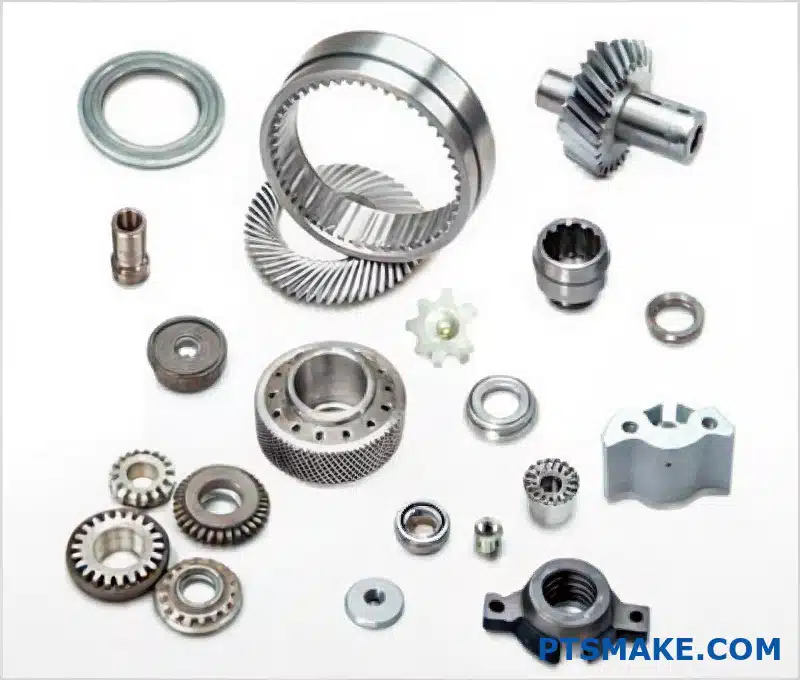
The Strategic Importance of Material Selection
Material costs typically account for 40-60% of total expenses in aerospace CNC machining projects. This makes material selection one of the most powerful levers for cost optimization. When working on aerospace components, I’ve found that balancing performance requirements with cost considerations requires deep knowledge of material properties and application-specific demands.
Aluminum Alloys vs. Titanium: Cost-Benefit Analysis
Aluminum alloys (particularly 6061-T6 and 7075-T6) offer excellent machinability and significant cost advantages over titanium, while still providing good strength-to-weight ratios. A typical comparison shows:
| Material | Relative Cost | Machinability | Weight | Corrosion Resistance | Typical Applications |
|---|---|---|---|---|---|
| Aluminum 6061-T6 | $ | Excellent | Low | Good | Non-structural components, brackets |
| Aluminum 7075-T6 | $$ | Good | Low | Moderate | Structural components, wing ribs |
| Titanium Ti-6Al-4V | $$$$ | Poor | Medium | Excellent | High-temperature components, landing gear |
For non-critical components, aluminum can deliver 70% cost savings compared to titanium while still meeting performance requirements. At PTSMAKE, we regularly work with aerospace clients to identify opportunities where aluminum can replace more expensive materials without compromising functionality.
Material Grade Optimization
Not every aerospace component requires the highest-grade materials. By matching material grades precisely to application requirements rather than defaulting to the highest specification, significant savings can be realized. This approach requires thorough material characterization3 and understanding of how different grades perform under specific conditions.
For instance, using 304 stainless steel instead of 316 for components not exposed to highly corrosive environments can reduce material costs by 15-20%.
Inventory Management and Bulk Purchasing Strategies
Effective inventory management directly impacts project costs and timelines in aerospace manufacturing. Implementing sophisticated inventory systems allows manufacturers to reduce waste while ensuring material availability.
Just-in-Time vs. Bulk Purchasing
While just-in-time inventory reduces carrying costs, strategic bulk purchasing can offer significant material discounts. The optimal approach depends on project timelines, storage capabilities, and cash flow considerations:
- Bulk purchasing typically yields 10-20% discounts but requires storage space and capital
- Just-in-time reduces carrying costs but may increase per-unit material costs
- Hybrid approaches work best for most aerospace projects, with bulk purchasing for common materials and just-in-time for specialty items
Material Standardization Benefits
Standardizing materials across multiple projects and components whenever possible increases purchasing power and reduces inventory complexity. By limiting the variety of materials stocked, manufacturers can:
- Negotiate better pricing through higher volume commitments
- Reduce material management overhead
- Minimize the risk of obsolete inventory
- Simplify quality control processes
Waste Reduction Techniques
Material waste represents a significant hidden cost in aerospace CNC machining. Modern aerospace components often start as solid blocks with up to 90% of material removed during machining. Implementing waste reduction strategies can dramatically improve cost-effectiveness.
Nesting and Optimized Cutting Strategies
Computer-aided nesting software can optimize material usage by arranging parts efficiently on stock material. This approach:
- Reduces raw material requirements by 5-15%
- Minimizes scrap generation
- Improves machine utilization
- Lowers overall project costs
Material Recycling Programs
Establishing robust recycling programs for valuable aerospace materials like titanium and nickel alloys can offset raw material costs. At PTSMAKE, our recycling program recovers approximately 30% of the original material cost through proper segregation and management of high-value scrap.
Supply Chain Partnerships and Material Sourcing
Developing strategic relationships with material suppliers specializing in aerospace-grade materials can yield significant advantages in both cost and quality assurance.
Certified Supplier Programs
Working with suppliers who understand and comply with aerospace standards (AS9100, NADCAP) eliminates costly quality issues and material rejections. Certified suppliers typically offer:
- Material certifications that meet aerospace traceability requirements
- Consistent quality that reduces inspection needs
- Technical support for material selection
- Competitive pricing for aerospace-grade materials
International vs. Domestic Sourcing
While domestic sourcing often offers faster delivery and easier communication, international sourcing can provide substantial cost advantages for certain materials. The decision matrix should consider:
- Lead time requirements
- Quality assurance capabilities
- Shipping and customs costs
- Currency exchange risks
- Compliance with export/import regulations
For aerospace projects with longer lead times, international sourcing from qualified suppliers can reduce material costs by 15-25% without compromising quality.
Quality Assurance Systems and Certifications in Aerospace CNC Machining
Have you ever received aerospace components that failed during critical operations despite promised quality? Or spent countless hours reworking parts that should have been perfect from the start? The stakes in aerospace manufacturing are incredibly high – even minor defects can lead to catastrophic consequences.
Effective quality control in aerospace CNC machining requires a comprehensive approach that includes both robust in-house systems and industry-recognized certifications. These complementary elements create a framework that ensures consistent part quality, traceability, and compliance with the stringent aerospace industry standards.
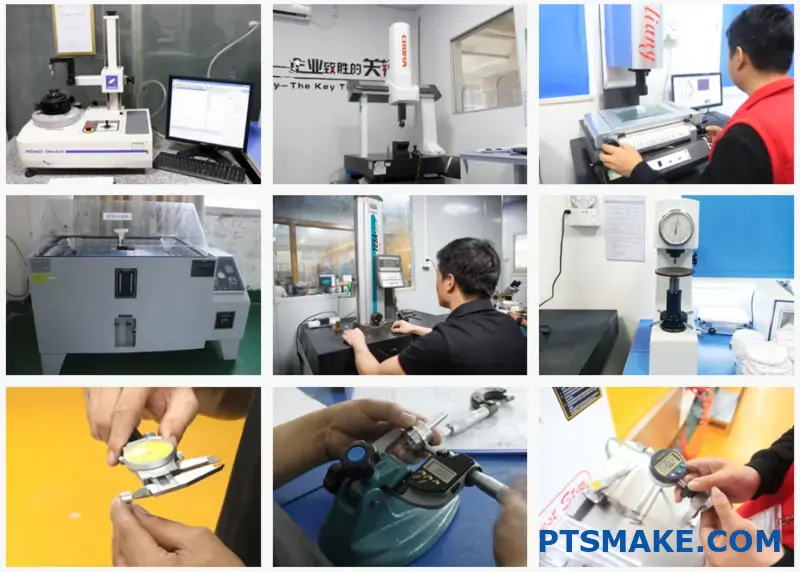
The Role of Quality Management Systems in Aerospace Manufacturing
Quality management systems (QMS) serve as the backbone of aerospace manufacturing operations. In my experience working with critical aerospace components at PTSMAKE, I’ve found that a well-implemented QMS provides the structure needed to consistently meet the exacting requirements of aerospace clients.
AS9100 Certification: The Gold Standard
The AS9100 certification is absolutely essential for aerospace CNC machining shops. This quality management standard builds upon ISO 9001 but adds specific requirements for aviation, space, and defense organizations. The certification ensures:
- Comprehensive risk management processes
- Enhanced product safety considerations
- Configuration management protocols
- Prevention of counterfeit parts
- Reliability and maintainability standards
For aerospace clients, working with an AS9100-certified machining partner like PTSMAKE provides confidence that every aspect of the manufacturing process adheres to industry-specific requirements.
Nadcap Accreditation for Special Processes
Beyond general quality management, Nadcap accreditation4 focuses on special processes critical to aerospace components. This includes non-destructive testing, heat treatment, chemical processing, and coating applications that are often required for aerospace parts.
The accreditation process involves rigorous audits by industry experts who thoroughly evaluate process controls, equipment calibration, personnel qualifications, and documentation practices. The stringent nature of these audits means that only truly capable suppliers achieve and maintain Nadcap accreditation.
Implementing Effective Quality Control Processes
A certification alone doesn’t guarantee quality – it must be supported by robust internal processes. Here are key components of an effective aerospace quality control system:
Advanced Inspection Technologies
Modern aerospace quality control relies heavily on sophisticated measurement and inspection technologies:
| Technology | Application | Accuracy Level |
|---|---|---|
| Coordinate Measuring Machines (CMM) | Precise dimensional verification | ±0.0001 inches |
| Optical Measurement Systems | Surface quality inspection | Micron-level detection |
| X-ray and CT Scanning | Internal structure verification | Detection of 0.2mm defects |
| Surface Roughness Testers | Surface finish validation | Ra values to 0.01μm |
At PTSMAKE, we’ve invested in these advanced inspection technologies to ensure that every aerospace component meets exact specifications before shipping.
Statistical Process Control (SPC)
Implementing SPC allows for real-time monitoring of machining processes. By collecting and analyzing data during production, we can:
- Identify process drift before it creates non-conforming parts
- Reduce variation in critical dimensions
- Document process capability for client qualification requirements
- Make data-driven decisions for continuous improvement
When properly implemented, SPC shifts quality control from detection to prevention – eliminating defects rather than simply finding them.
First Article Inspection (FAI)
For aerospace components, the FAI process serves as a critical verification step before full production begins. This comprehensive inspection:
- Verifies that all dimensions meet print specifications
- Confirms material certifications match requirements
- Validates special process results
- Ensures complete documentation trail
A thorough FAI establishes confidence in both the manufacturing process and the final product quality before committing to production quantities.
Material Traceability and Documentation Requirements
In aerospace manufacturing, quality control extends beyond the physical part to encompass comprehensive documentation and traceability systems.
Material Certification and Lot Control
Every raw material used in aerospace components must have complete certification documentation that tracks:
- Chemical composition
- Mechanical properties
- Heat treatment history
- Batch or lot identification
- Country of origin
This information must flow through the entire manufacturing process, allowing any finished component to be traced back to its original material source.
Non-Conformance Management
Even with robust preventive measures, occasional non-conformances may occur. An effective quality system must include procedures for:
- Documenting non-conformances
- Performing root cause analysis
- Implementing corrective actions
- Verifying effectiveness of solutions
- Preventing recurrence through systemic improvements
The aerospace industry demands not just identification of problems but evidence of sustainable solutions.
Continuous Improvement in Quality Processes
Quality control in aerospace manufacturing is never static. Continuous improvement must be built into the system through:
- Regular internal audits
- Management review of quality metrics
- Customer feedback incorporation
- Benchmarking against industry standards
- Investment in new technologies and training
By approaching quality as an ongoing journey rather than a destination, aerospace CNC machining providers can stay ahead of evolving industry requirements and customer expectations.
At PTSMAKE, our commitment to quality excellence in aerospace machining is demonstrated through both our formal certifications and our daily attention to detail. Our quality systems ensure that every component we produce meets the exacting standards required for flight-critical applications.
Aerospace CNC Machining: Innovations Driving Industry Growth?
Ever wondered which sectors are truly transformed by aerospace-grade precision manufacturing? Many industries struggle with the traditional manufacturing limitations of cost, time, and precision when conventional methods fall short for complex applications requiring aerospace-level quality.
Aerospace CNC machining solutions benefit industries that require extreme precision, lightweight components, and heat-resistant materials. Aviation, defense, medical, automotive, and telecommunications sectors gain the most value, leveraging aerospace manufacturing innovations to enhance performance, reliability, and efficiency in their specialized applications.

Aviation and Aerospace: The Natural Beneficiaries
The aviation and aerospace sectors naturally stand as the primary beneficiaries of aerospace CNC machining solutions. In these industries, the margin for error is virtually non-existent, with components often requiring tolerances measured in microns.
Commercial Aircraft Manufacturing
Commercial aircraft manufacturing represents one of the most demanding applications for precision machining. Modern passenger jets contain thousands of CNC-machined components, from critical engine parts to structural elements. These parts must meet stringent requirements:
- Exceptional strength-to-weight ratios
- Ability to withstand extreme temperature variations
- Resistance to fatigue and corrosion
- Consistent performance over thousands of flight cycles
The economic impact is significant – even small weight reductions can save airlines millions in fuel costs over an aircraft’s lifetime. This is why aerospace CNC machining, with its ability to create lightweight yet strong components from materials like titanium alloys and heat-resistant superalloys, provides tremendous value.
Space Exploration Systems
The space industry presents even more extreme demands. Components for satellites, launch vehicles, and space probes must function flawlessly in the harshest environment imaginable. The cryogenic treatment5 process often applied to aerospace CNC machined parts enhances their performance in the extreme temperature variations of space.
In my work with space industry clients, I’ve seen firsthand how aerospace machining techniques enable the creation of components that can withstand:
- Vacuum conditions
- Radiation exposure
- Temperature extremes from -270°C to +150°C
- Micrometeoroid impacts
- Vibrational stress during launch
Defense Industry Applications
The defense sector leverages aerospace CNC machining extensively for similar reasons – precision, reliability, and performance under extreme conditions.
Military Aircraft and UAV Components
Military aircraft and unmanned aerial vehicles (UAVs) require components that push the boundaries of what’s possible in manufacturing. At PTSMAKE, we’ve produced complex parts for defense applications that demonstrate the value of aerospace machining capabilities:
| Component Type | Material | Critical Requirements | Benefits of Aerospace CNC Methods |
|---|---|---|---|
| UAV Propulsion Systems | Inconel, Titanium | Heat resistance, Lightweight | 40% weight reduction, 300% longer service life |
| Guidance Systems Housing | Aluminum 7075 | Precision tolerances, EMI shielding | ±0.0005" tolerance maintenance, Enhanced signal integrity |
| Structural Components | Carbon fiber composites | Strength, Vibration dampening | Superior strength-to-weight ratio, Reduced radar signature |
Naval and Ground Defense Systems
Beyond aircraft, defense applications on land and sea benefit significantly from aerospace CNC machining techniques. Modern naval vessels utilize precision-machined components in propulsion systems, weapons platforms, and communication arrays. Similarly, ground defense systems incorporate aerospace-grade components in guidance systems, armor, and electronic warfare equipment.
Medical Industry: Precision for Life-Critical Applications
The medical industry has become one of the surprising major beneficiaries of aerospace CNC machining technology, particularly in the following areas:
Surgical Instruments and Implants
Surgical instruments and medical implants share many requirements with aerospace components:
- Extreme precision
- Biocompatibility
- Resistance to sterilization processes
- Reliability under stress
Titanium, a staple in aerospace manufacturing, has become the material of choice for many orthopedic implants due to its biocompatibility and strength. The techniques refined in aerospace machining allow for the creation of complex geometries in these medical devices, such as the porous surfaces needed for bone ingrowth in implants.
Medical Imaging Equipment
Advanced medical imaging systems like MRI machines and CT scanners contain numerous precision components that benefit from aerospace machining techniques. These components require exceptional dimensional stability and non-magnetic properties – specialties of aerospace manufacturing.
Automotive and Racing: Performance Through Precision
The automotive industry, especially the high-performance and racing sectors, increasingly adopts aerospace CNC machining techniques.
Formula 1 and Motorsports
In Formula 1 racing, where milliseconds determine victories, teams extensively use aerospace machining methods for engine components, suspension systems, and aerodynamic elements. These parts require:
- Extreme lightweight construction
- Ability to withstand high RPMs and temperatures
- Precise fluid and air flow characteristics
- Resistance to fatigue under cyclic loading
Electric Vehicle Development
The rapidly evolving electric vehicle market benefits tremendously from aerospace CNC machining capabilities. Battery housing components, motor parts, and thermal management systems all require the precision and material capabilities developed for aerospace applications.
Telecommunications and Satellite Industries
The global telecommunications network relies heavily on satellite systems with components manufactured using aerospace CNC machining techniques. These applications demand:
- Exceptional RF properties
- Thermal stability in space environments
- Weight optimization for launch efficiency
- Longevity without maintenance
The antenna systems, waveguides, and structural components in satellites directly benefit from the manufacturing capabilities developed for aerospace applications.
Future Trends in Aerospace CNC Machining Supplier Selection?
Have you found yourself wondering how tomorrow’s aerospace manufacturing will reshape your supplier selection process? The rapid pace of technological change and evolving industry standards can leave even experienced procurement professionals feeling uncertain about which supplier relationships will remain valuable in the coming years.
The future of aerospace CNC machining supplier selection will increasingly focus on digital integration, sustainability practices, and advanced material capabilities. Companies that can demonstrate mastery of these emerging trends while maintaining core quality and reliability standards will become preferred partners in the aerospace supply chain.
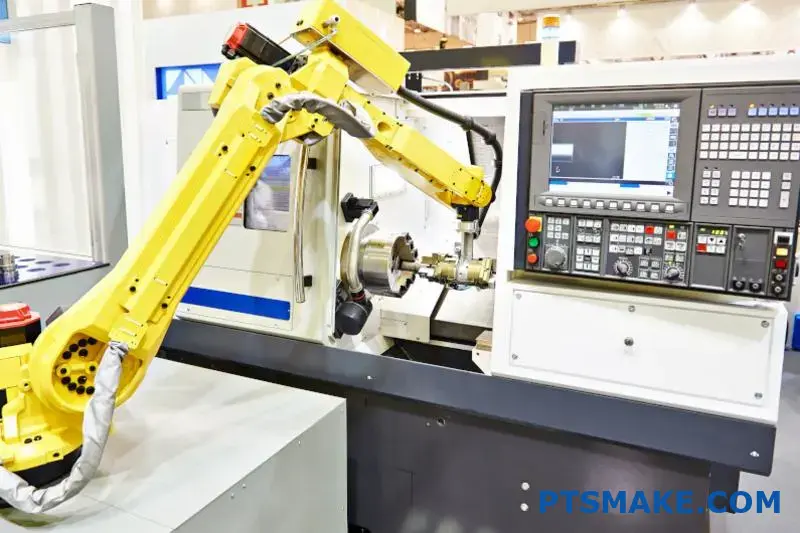
Digital Transformation in Aerospace Manufacturing
The aerospace manufacturing landscape is undergoing a significant digital transformation that will fundamentally change how we evaluate and select CNC machining suppliers. This shift extends far beyond basic automation to create entirely new possibilities for collaboration and quality assurance.
Industry 4.0 Integration
Suppliers at the forefront of Industry 4.0 implementation are positioning themselves as valuable long-term partners. In my discussions with aerospace procurement teams, I’ve observed growing preference for machining partners with digital manufacturing capabilities that include:
- Real-time production monitoring systems
- Digital twins of manufacturing processes
- IoT-enabled equipment with predictive maintenance
- Cloud-based quality management systems
These technologies allow for unprecedented visibility into manufacturing operations. When evaluating future suppliers, look for those who can demonstrate how their digital infrastructure directly improves part quality, reduces lead times, and enhances communication throughout the production process.
Cybersecurity Capabilities
With increased connectivity comes heightened security concerns, especially in aerospace applications where ITAR compliance6 and intellectual property protection are paramount. Forward-thinking suppliers are investing in robust cybersecurity frameworks that safeguard design data and manufacturing processes.
When evaluating suppliers for future projects, I recommend requesting detailed information about their:
- Data protection protocols for both digital and physical assets
- Employee cybersecurity training programs
- Incident response procedures
- Regular security audits and certifications
Sustainability as a Selection Factor
Environmental considerations are rapidly becoming critical differentiators in aerospace supplier selection. This shift reflects both regulatory pressures and market demands for more sustainable manufacturing practices.
Energy-Efficient Manufacturing
Leading aerospace CNC machining suppliers are investing in energy-efficient equipment and processes that reduce carbon footprints while maintaining precision and quality. At PTSMAKE, we’ve seen how these initiatives not only benefit the environment but often result in cost savings that can be passed to customers.
Suppliers demonstrating commitment to energy efficiency typically show:
- Investment in modern, energy-efficient CNC equipment
- Implementation of energy management systems
- Use of renewable energy sources
- Regular energy audits and improvement plans
Material Waste Reduction
Aerospace components often require machining from solid billets, traditionally resulting in significant material waste. Forward-thinking suppliers are adopting technologies and techniques to address this challenge:
| Waste Reduction Approach | Benefits | Implementation Challenges |
|---|---|---|
| Near-net-shape starting materials | Reduces raw material usage by 30-40% | Requires additional preprocessing |
| Optimized toolpaths and cutting strategies | Improves material utilization by 15-25% | Demands advanced programming skills |
| Material reclamation programs | Creates closed-loop material systems | Requires specialized recycling capabilities |
| Additive-subtractive hybrid manufacturing | Minimizes material waste for complex geometries | Significant investment in new technologies |
When evaluating future suppliers, ask for specific metrics regarding their material utilization rates and waste reduction initiatives. The most innovative partners will have quantifiable goals and documented progress toward more sustainable manufacturing practices.
Advanced Materials Processing Capabilities
The aerospace industry continues to push boundaries with new materials that offer improved strength-to-weight ratios, temperature resistance, and other specialized properties. Your future supplier selection strategy should prioritize partners with demonstrated expertise in machining these advanced materials.
Composite Material Machining
While traditional metals remain important, composite materials are increasingly common in aerospace applications. Leading suppliers are developing specialized expertise in:
- Carbon fiber-reinforced polymers (CFRP) machining
- Ceramic matrix composites processing
- Honeycomb structure machining
- Hybrid material joining techniques
When evaluating suppliers for composite machining capabilities, look beyond basic equipment lists to examine their experience with specific material types and configurations. The most valuable partners will have documented processes and quality metrics for each material they work with.
Heat-Resistant Superalloy Processing
Next-generation aircraft engines and hypersonic applications require components made from increasingly sophisticated superalloys. Suppliers with proven capabilities in machining materials like Inconel, Waspaloy, and other nickel and cobalt-based alloys will be particularly valuable as these materials become more prevalent.
In my experience managing complex aerospace programs, I’ve found that suppliers who invest in specialized tooling, fixturing, and machining strategies for these challenging materials ultimately deliver superior results in terms of both quality and cost-effectiveness.
The Human Element in Future Supplier Relationships
Despite increasing automation and digitalization, the human element remains crucial in successful aerospace supplier relationships. The most valuable future partners will combine technological capabilities with strong collaborative approaches and talent development.
Look for suppliers investing in their workforce through:
- Advanced training programs for machinists and programmers
- Cross-functional team development
- Knowledge retention and transfer systems
- Collaborative problem-solving approaches
These human-centered capabilities often differentiate truly exceptional suppliers from those who merely have adequate technical resources.
Balancing Precision and Efficiency in Aerospace CNC Machining?
Have you ever wondered why aerospace components cost so much and take so long to manufacture? Or why even the smallest error in an aircraft part can lead to catastrophic consequences? The aerospace industry demands perfection in a world where physics and material limitations constantly push back.
Balancing precision and efficiency in aerospace CNC machining presents significant challenges. Manufacturers must maintain extremely tight tolerances while managing heat generation, tool wear, and cycle times. This delicate balance requires advanced process monitoring, optimal cutting strategies, and sometimes sacrificing speed for quality.
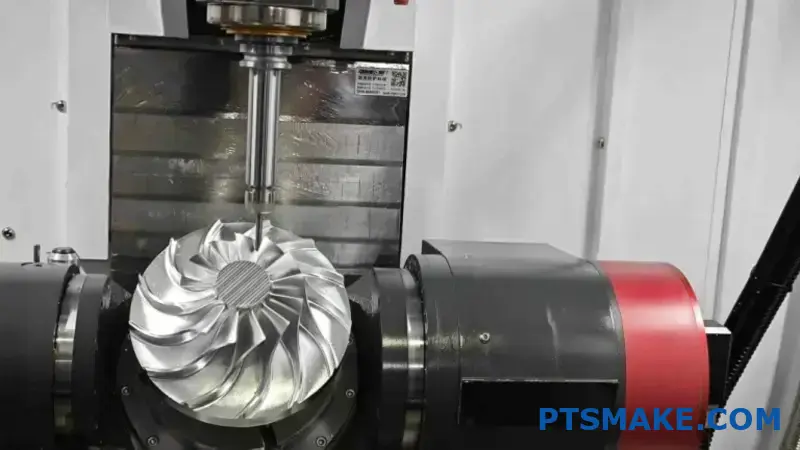
The Precision-Efficiency Tradeoff
When machining complex aerospace geometries, the relationship between precision and efficiency creates a constant tension. In my experience working with aerospace clients at PTSMAKE, I’ve found that this balance varies dramatically depending on the specific component requirements.
How Precision Requirements Impact Machining Speed
The aerospace industry typically requires tolerances of ±0.0005 inches or tighter for critical components. Achieving this level of precision often means:
- Slower feed rates to minimize vibration
- Multiple finishing passes to achieve final dimensions
- Frequent in-process inspections that interrupt machining
- Extended machine warm-up periods to account for thermal expansion
For example, when machining turbine blades with complex airfoil surfaces, we might need to reduce cutting speeds by 30-50% compared to similar operations in less demanding industries. This directly impacts production timelines and costs.
The Cost of Thermal Management
Heat generation during high-speed machining of aerospace alloys creates significant challenges for maintaining dimensional accuracy. Thermal deformation7 during machining can cause dimensions to drift outside acceptable tolerances.
Effective management strategies include:
| Approach | Benefits | Drawbacks |
|---|---|---|
| Coolant flooding | Excellent heat removal | Environmental concerns, part cleaning requirements |
| Minimum quantity lubrication | Reduced environmental impact | May be insufficient for extreme conditions |
| Cryogenic cooling | Superior cooling capability | High operational costs, specialized equipment needed |
| Intermittent cutting | Allows heat dissipation | Significantly extends machining time |
At PTSMAKE, we’ve developed optimized cooling protocols for different aerospace alloys, finding the right balance between thermal management and productivity for each specific application.
Real-Time Monitoring and Adaptive Control
Maintaining efficiency without sacrificing precision requires sophisticated monitoring systems. When machining complex aerospace components, several variables must be continuously tracked:
Critical Process Parameters
- Cutting Forces: Excessive forces indicate potential tool wear or deflection
- Vibration Levels: Even micro-vibrations can affect surface finish
- Thermal Conditions: Both machine and workpiece temperature fluctuations
- Dimensional Stability: In-process measurement to verify compliance
Modern aerospace machining cells incorporate these monitoring systems with closed-loop feedback to automatically adjust machining parameters. This allows for maintaining the highest possible efficiency without risking part quality.
Strategic Toolpath Planning for Complex Geometries
The complexity of aerospace geometries often requires sophisticated toolpath strategies. Traditional approaches can lead to inefficiency and quality issues when dealing with features like:
- Thin walls in structural components
- Deep pockets with varying floor contours
- Compound curved surfaces with tight tolerances
- Internal features requiring specialized tooling
By employing advanced toolpath strategies such as trochoidal milling and adaptive clearing, we can maintain consistent tool engagement, reducing stress on both the cutting tool and the workpiece. This approach has helped us reduce machining time by up to 40% on certain complex aerospace components while actually improving surface quality.
Material-Specific Challenges
Different aerospace materials present unique challenges in balancing precision and efficiency:
- Titanium Alloys: Excellent strength-to-weight ratio but poor thermal conductivity requires careful heat management
- Nickel Superalloys: Extreme hardness and work hardening characteristics demand specialized cutting strategies
- Aluminum Aerospace Grades: Softer but require high surface finish quality and thin-wall capability
- Composite Materials: Non-homogeneous properties create unpredictable cutting conditions
Each material category requires specific tooling, cutting parameters, and monitoring approaches to optimize the precision-efficiency balance. At PTSMAKE, we’ve developed material-specific protocols based on extensive testing and production experience.
The Role of Machine Rigidity and Dynamics
Machine selection plays a critical role in balancing precision and efficiency. Key considerations include:
- Static Rigidity: Resistance to deflection under cutting forces
- Dynamic Stability: Ability to maintain accuracy during rapid movements
- Thermal Stability: Minimizing dimensional drift during extended operations
- Damping Characteristics: Absorption of vibration during high-speed cutting
For aerospace work requiring both high precision and reasonable efficiency, we typically select machines with premium spindle systems, temperature-controlled structures, and advanced control systems capable of look-ahead processing to optimize acceleration and deceleration.
Finding the right balance between precision and efficiency in aerospace CNC machining remains one of the industry’s greatest challenges. It requires a comprehensive approach that considers the specific part requirements, material properties, machine capabilities, and process monitoring strategies. By carefully optimizing each aspect of the manufacturing process, we can achieve the exceptional quality standards demanded by aerospace applications while maintaining viable production rates.
What Certifications Are Required for Reliable Aerospace CNC Machining Services?
Have you ever commissioned aerospace parts only to discover they don’t comply with industry standards? Or worse, received components that passed inspection but failed during operation? The aerospace industry has zero tolerance for error, yet navigating the maze of required certifications can be overwhelming.
Reliable aerospace CNC machining services require AS9100 certification at minimum, along with additional qualifications like NADCAP, ISO 9001, and specific OEM approvals. These certifications ensure suppliers meet rigorous quality standards, maintain proper documentation, and follow specialized aerospace manufacturing protocols.

The Critical Role of Certifications in Aerospace Manufacturing
In the high-stakes world of aerospace manufacturing, certifications aren’t just paperwork—they’re essential safeguards. When I evaluate potential manufacturing partners for aerospace projects, certification verification is always my first step. These standardized qualifications establish a baseline for quality management systems, process controls, and technical capabilities.
The aerospace industry demands unprecedented precision and reliability. A single manufacturing defect can lead to catastrophic failures, which is why regulatory authorities and OEMs have established such comprehensive certification frameworks. These certifications provide a structured approach to quality that extends beyond the physical properties of parts to encompass the entire manufacturing operation.
AS9100: The Gold Standard for Aerospace Manufacturing
AS9100 stands as the cornerstone certification for aerospace manufacturing. This standard builds upon ISO 9001 but adds approximately 100 additional requirements specific to aerospace quality and safety. Having worked with numerous suppliers, I’ve observed that AS9100-certified partners consistently deliver superior results due to their:
- Rigorous process controls and documentation
- Enhanced traceability through all production stages
- Comprehensive risk management systems
- Strict attention to counterfeit part prevention
- Advanced configuration management
The current revision, AS9100 Rev D, integrates with other key standards to create a comprehensive quality management approach. This isn’t merely about satisfying customer requirements—it’s about creating a culture where quality is embedded in every process.
NADCAP: Process-Specific Certification for Special Processes
While AS9100 covers overall quality management, NADCAP (National Aerospace and Defense Contractors Accreditation Program) focuses on special processes that are crucial to aerospace component integrity. These include:
| Special Process | Description | Why It’s Critical |
|---|---|---|
| Heat Treatment | Thermal processing to alter material properties | Ensures material strength and durability |
| Chemical Processing | Surface treatments and coatings | Provides corrosion resistance and specific surface properties |
| Nondestructive Testing | Inspection methods that don’t destroy the part | Verifies internal integrity without compromising the component |
| Welding | Joining of materials | Creates structural bonds that must withstand extreme conditions |
| Surface Enhancement | Shot peening, laser peening | Improves fatigue resistance and component lifespan |
NADCAP certification for these processes demonstrates exceptional capability in these specialized areas. I’ve found that suppliers with NADCAP certifications typically exhibit superior understanding of metallurgical transformations8 during manufacturing, which directly impacts part performance.
Manufacturer-Specific Certifications and Approvals
Beyond industry-standard certifications, many OEMs maintain their own approval programs. Boeing’s D1-9000, Airbus’s AIMS, and similar programs establish additional requirements tailored to specific manufacturer needs. At PTSMAKE, we’ve navigated these approval processes to support various tier-one aerospace suppliers.
These manufacturer-specific approvals often include:
- Specialized material handling protocols
- Custom inspection criteria
- Proprietary process specifications
- Unique documentation requirements
ISO 9001: The Foundation of Quality Management
While aerospace-specific certifications build upon ISO 9001, this foundational quality management standard remains critically important. It establishes the framework for:
- Process-based approaches to quality management
- Evidence-based decision making
- Continuous improvement methodologies
- Risk-based thinking
A robust ISO 9001 system serves as the backbone upon which aerospace-specific requirements are built. Suppliers without strong ISO 9001 implementation typically struggle to meet the more demanding aerospace standards.
Material Certifications and Traceability Requirements
Aerospace components demand complete material traceability from raw stock to finished part. This includes:
- Material test reports (MTRs) documenting chemical composition
- Physical property verification
- Heat lot traceability
- Raw material source documentation
The ability to trace any component back to its original material batch is non-negotiable in aerospace manufacturing. When reviewing potential suppliers, I always verify their material handling and documentation systems meet these exacting standards.
Environmental and Safety Certifications
Modern aerospace manufacturing must also address environmental and workplace safety concerns through certifications like:
- ISO 14001 for environmental management
- ISO 45001 for occupational health and safety
- Compliance with REACH, RoHS, and other material restriction regulations
These certifications ensure manufacturing processes minimize environmental impact while protecting worker safety—increasingly important considerations for sustainable aerospace manufacturing.
How to Verify Supplier Certifications
When selecting an aerospace machining partner, thorough certification verification is essential. I recommend:
- Requesting current copies of all certification documents
- Verifying certifications through official registrar databases
- Conducting on-site audits to confirm implementation
- Reviewing recent customer approvals and references
At PTSMAKE, we maintain comprehensive certification documentation and welcome client verification of our quality systems. This transparency builds the trust essential for successful aerospace partnerships.
How Does Rapid Prototyping Enhance Aerospace CNC Machining Efficiency?
Have you ever faced tight aerospace manufacturing deadlines while struggling with design flaws that were discovered too late? Or perhaps you’ve experienced the frustration of costly production changes when issues weren’t identified during the design phase? These challenges can derail even the most meticulously planned aerospace projects.
Rapid prototyping significantly enhances aerospace CNC machining efficiency by allowing engineers to test designs before full production, reducing costly errors, accelerating development cycles, and enabling complex geometry validation. This approach cuts overall manufacturing time by up to 70% while improving final part quality.
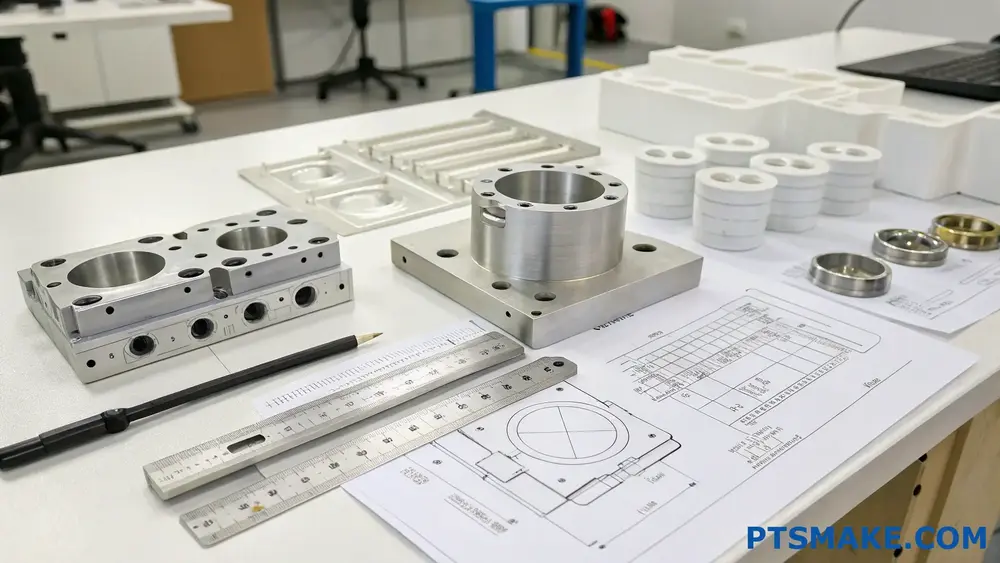
The Intersection of Rapid Prototyping and Aerospace Manufacturing
Rapid prototyping has revolutionized how we approach aerospace component manufacturing. By creating physical models quickly from digital designs, we can validate concepts before committing to expensive production runs. In the aerospace industry, where precision is non-negotiable and material costs are substantial, this approach delivers tremendous value.
My team at PTSMAKE regularly employs rapid prototyping techniques to help our aerospace clients optimize their parts before full-scale production. The ability to physically hold, test, and evaluate components dramatically improves the final product while reducing the overall development timeline.
Benefits of Integrating Rapid Prototyping in Aerospace CNC Machining
The aerospace industry demands exceptional quality standards, and rapid prototyping offers several key advantages:
Design Validation: Engineers can quickly test multiple iterations of a component design without the costs associated with full production runs.
Complex Geometry Testing: Aerospace components often feature intricate geometries that are difficult to visualize in CAD software alone. Rapid prototypes allow engineers to verify these complex shapes work as intended.
Weight Optimization: In aerospace applications, every gram matters. Prototyping allows for precise weight reduction while maintaining structural integrity.
Functional Testing: Essential for aerospace applications, prototypes can undergo initial testing to verify performance under operating conditions.
Material Selection Validation: Different materials behave differently when machined. Prototyping helps engineers confirm material choices before committing to expensive aerospace-grade alloys.
Rapid Prototyping Technologies in Aerospace Applications
Several additive manufacturing9 technologies are commonly used alongside traditional CNC machining for aerospace prototyping:
| Technology | Advantages | Typical Applications |
|---|---|---|
| Fused Deposition Modeling (FDM) | Low cost, quick turnaround | Concept models, fit testing |
| Selective Laser Sintering (SLS) | Good strength, no support structures needed | Functional prototypes, complex geometries |
| Direct Metal Laser Sintering (DMLS) | Creates metal parts directly, high precision | Final parts, complex metal components |
| Stereolithography (SLA) | Excellent surface finish, high detail | Visual models, patterns for casting |
| CNC Machining | High accuracy, actual production materials | Functional prototypes, low-volume production |
Streamlining Development Cycles with Rapid Prototyping
One of the most significant advantages I’ve observed is how rapid prototyping compresses development timelines. Traditional aerospace development cycles often lasted years, but with advanced prototyping, we can reduce this dramatically.
Accelerated Design Iteration Process
The traditional design process could take months between iterations as teams waited for machined prototypes. Now, we can produce prototypes in days or even hours, allowing for:
- Faster Design Feedback: Engineers receive physical parts quickly, enabling rapid design improvements.
- Parallel Development: Multiple design variations can be tested simultaneously.
- Early Problem Detection: Issues that might only appear during manufacturing are identified before production begins.
At PTSMAKE, we’ve implemented a hybrid approach that combines rapid prototyping with traditional CNC machining. This allows our aerospace clients to validate designs quickly using cost-effective prototyping, then transition seamlessly to precision CNC machining for final parts.
Cost Implications and ROI Considerations
The financial benefits of incorporating rapid prototyping are substantial:
- Reduced Scrap Rates: By identifying issues before production, waste is minimized.
- Lower Tooling Costs: Changes made during the prototyping phase avoid expensive tooling modifications later.
- Minimized Production Downtime: Well-tested designs reduce the likelihood of production stoppages.
- Optimized Material Usage: Prototyping helps engineers develop parts that use materials more efficiently.
Real-World Implementation Strategy
To maximize the benefits of rapid prototyping in aerospace CNC machining, I recommend following these practical steps:
Start with Clear Requirements: Define critical performance parameters and success criteria before beginning prototyping.
Choose the Right Prototyping Method: Select technology based on what you need to validate (form, fit, or function).
Design for Testability: Ensure prototypes can be easily tested against requirements.
Plan for Iteration: Build time for multiple design iterations into your project schedule.
Transition Planning: Develop a clear path from prototype to production, including documentation of all design changes.
Case Example: Turbine Component Optimization
In a recent project at PTSMAKE, we helped an aerospace client optimize a complex turbine component. Initially, we created rapid prototypes using SLS technology to validate the basic design. After three design iterations, we moved to DMLS prototypes for functional testing. Finally, we transitioned to 5-axis CNC machining for production parts using titanium alloy. This approach reduced their development time by 60% and lowered production costs by identifying and resolving flow issues before full production.
The key to success in aerospace manufacturing isn’t just having advanced technology—it’s knowing how to integrate various technologies into a cohesive development process. Rapid prototyping serves as the bridge between design and production, ensuring that when parts reach the CNC machining stage, they’re optimized for both performance and manufacturability.
Can Aerospace CNC Machining Handle Both Large-Scale and Custom Orders?
Have you ever been stuck between needing a large production run of aerospace components and requiring highly specialized custom parts, wondering if one manufacturer could handle both? The dilemma intensifies when tight deadlines and stringent industry specifications enter the picture, leaving you questioning whether flexibility and scale can truly coexist.
Yes, modern aerospace CNC machining can effectively handle both large-scale and custom orders. Advanced manufacturing facilities employ scalable production systems, integrated quality control, and versatile machining technologies that allow them to shift between high-volume standardized production and specialized one-off components while maintaining aerospace-grade precision and certification compliance.

The Scale Spectrum in Aerospace Manufacturing
The aerospace industry presents a unique challenge when it comes to manufacturing requirements. On one hand, commercial aircraft production might require thousands of identical components. On the other, specialized aerospace applications may need just a single precisely engineered part with unique specifications. This creates a spectrum of manufacturing needs that few industries demand.
Large-Scale Production Capabilities
When we talk about large-scale aerospace manufacturing, we’re looking at substantial volume production of standardized parts. These components often include:
- Structural frame elements
- Engine mounting brackets
- Interior fixture components
- Standard fasteners and connectors
Modern CNC machining centers designed for aerospace applications have evolved to handle these large-scale requirements through several key technologies:
- Multi-axis machining centers that can operate continuously
- Automated material handling systems
- Robotic loading/unloading capabilities
- Advanced tool management systems
The efficiency of these systems comes from their ability to maintain consistent quality while maximizing throughput. In my experience managing aerospace production at PTSMAKE, I’ve seen how our high-capacity machining centers can produce thousands of identical components with tolerances consistently held within ±0.0005 inches (0.0127mm).
Custom Order Processing
At the opposite end of the spectrum are custom, low-volume orders that might involve:
- Prototype components for new aircraft designs
- Replacement parts for legacy systems
- Specialized testing equipment components
- One-off research and development parts
Custom aerospace manufacturing requires a fundamentally different approach. While using similar CNC technology, the operational methodology10 shifts dramatically. Programming becomes more intensive, setup times increase, and specialized tooling may be required.
Integration of Both Capabilities
The real question becomes: can a single manufacturer effectively handle both extremes? In my assessment, the key factors enabling this dual capability include:
Adaptive Manufacturing Systems
The most advanced aerospace CNC facilities now implement what I call "adaptive manufacturing" – systems designed to efficiently shift between production modes. This includes:
| Capability | Large-Scale Benefit | Custom Order Benefit |
|---|---|---|
| CAM software versatility | Quick programming of multiple identical parts | Complex single-part programming |
| Modular fixturing | Fast changeovers for new production runs | Specialized workholding for unique geometries |
| Tool library management | Optimized tool paths for high-volume runs | Specialized tooling availability for custom requirements |
| Digital twin simulation | Production efficiency optimization | Verification of complex custom operations |
Workforce Specialization and Flexibility
Another critical factor is the human element. Effective dual-capability manufacturers maintain teams with:
- Production specialists who excel at optimizing high-volume runs
- Engineering specialists who can tackle custom programming challenges
- Universal quality control personnel trained in both scenarios
- Project managers who understand the different workflows
At PTSMAKE, we’ve developed this dual capability by creating specialized teams while maintaining unified quality standards and certification processes. This ensures both our large-scale aerospace clients and those with custom, specialized needs receive appropriate attention.
Quality Assurance Across the Scale Spectrum
For aerospace applications, quality cannot be compromised regardless of order size. This presents a particular challenge when managing both large-scale and custom orders. Here’s how effective CNC machinists address this:
Quality Systems for Large-Scale Production
- Statistical Process Control (SPC) implementation
- Automated in-line inspection systems
- Batch sampling protocols
- Process capability studies
Quality Systems for Custom Orders
- 100% inspection protocols
- Specialized measurement solutions
- Enhanced documentation
- Customized testing procedures
The unifying element is a comprehensive quality management system that can adapt to both scenarios while maintaining rigorous aerospace standards like AS9100 compliance.
Cost Considerations and Manufacturing Economics
Understanding the economic realities of dual-capability manufacturing helps explain why some CNC shops choose to specialize while others offer both services:
Economy of Scale Factors
Large-scale production benefits from:
- Amortized setup costs across many parts
- Bulk material purchasing advantages
- Optimized machine utilization
- Reduced per-unit programming costs
Custom Value Propositions
Custom manufacturing justifies higher costs through:
- Specialized engineering expertise
- Flexible manufacturing capabilities
- Rapid response capacity
- Unique problem-solving abilities
A manufacturer capable of handling both must carefully manage these divergent economic models. This typically requires separate cost structures and pricing strategies for each type of work, though unified facilities and equipment.
Conclusion: The Integrated Capability Approach
After working with hundreds of aerospace projects ranging from single prototypes to production runs of thousands, I’ve concluded that the most effective approach is what I call the "integrated capability model." This approach recognizes that large-scale and custom manufacturing aren’t opposing forces but complementary capabilities that strengthen each other.
A manufacturer with both capabilities can leverage the precision engineering mindset required for custom work to improve their large-scale production, while using the process efficiency focus of large-scale work to make custom projects more economical. This creates a powerful synergy that benefits aerospace clients regardless of where on the spectrum their needs fall.
The answer to whether aerospace CNC machining can handle both large-scale and custom orders is decidedly yes—but only when manufacturers strategically develop both capabilities as part of an integrated manufacturing philosophy rather than treating them as separate business lines.
Learn how surface interaction properties affect aerospace part performance and reliability. ↩
Click here to learn specialized machining techniques for difficult aerospace materials. ↩
Learn about testing methods that assess material properties for aerospace applications. ↩
Learn about critical aerospace manufacturing accreditations for safer component selection. ↩
Learn how this specialized cooling technique enhances metal part durability and performance in extreme conditions. ↩
Click for detailed requirements and certification process for aerospace suppliers. ↩
Click for detailed analysis of thermal effects in aerospace machining. ↩
Learn how material properties change during machining processes to improve part performance. ↩
Learn how additive technologies can transform your aerospace projects. ↩
Learn how specialized manufacturing workflows optimize both custom and large-scale projects. ↩



